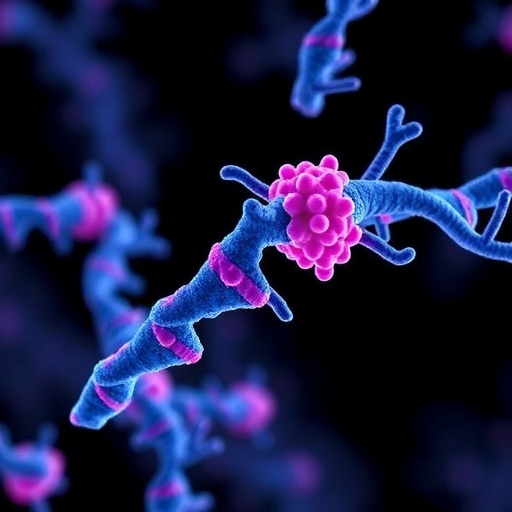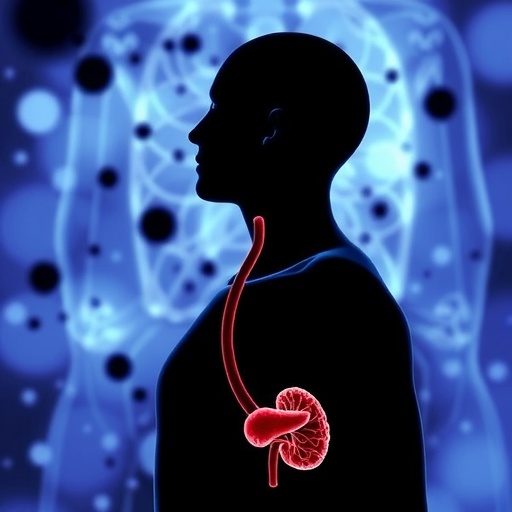Triple-negative breast cancer (TNBC) remains one of the most challenging subtypes of breast cancer to treat effectively. Defined by the lack of expression of estrogen receptor (ER), progesterone receptor (PR), and human epidermal growth factor receptor 2 (HER2), TNBC is notorious for its aggressive clinical course and limited therapeutic options. Platinum-based chemotherapies, such as cisplatin, have long been a mainstay in the management of TNBC, offering initial tumor control for many patients. However, the persistent clinical obstacle of platinum resistance severely limits the overall benefit of these regimens, culminating in relapse, metastasis, and poor long-term survival. In a groundbreaking investigation published in Science China Life Sciences, a research team led by scientists at Sun Yat-sen University Sun Yat-sen Memorial Hospital has unveiled a novel circRNA-encoded peptide that underpins platinum resistance in TNBC, opening new avenues for targeted intervention in this refractory disease.
To unravel the molecular underpinnings driving acquired resistance to platinum agents, the researchers established robust cisplatin-resistant TNBC cell lines by subjecting sensitive parental cultures (231-pa and 468-pa) to prolonged treatment with escalating cisplatin doses. These resistant derivatives, designated 231-cisR and 468-cisR, exhibited dramatically diminished sensitivity to cisplatin, enabling a comparative transcriptomic and proteomic analysis that revealed the upregulation of a circular RNA (circRNA) known as circSCAP. This circRNA was preferentially enriched in resistant cells in vitro and in platinum-refractory tumor specimens from patients, implicating it as a key player in the resistance phenotype.
What sets this discovery apart is the revelation that circSCAP is not merely a non-coding RNA but harbors intrinsic protein-coding potential. Advanced bioinformatics and experimental assays demonstrated that circSCAP contains a functional internal ribosome entry site (IRES), facilitating cap-independent translation, along with a conserved open reading frame (ORF) that encodes a novel 129-amino-acid peptide, termed SCAP-129aa. This circRNA-encoded micropeptide was validated by immunoblotting and immunohistochemistry in resistant TNBC cells and clinical tissue samples, where its expression paralleled that of the circRNA. The confirmation of circSCAP’s translation challenges the conventional dogma that circRNAs serve solely regulatory or sponging roles, underscoring an emerging landscape of circRNA-derived functional peptides in cancer biology.
Functional dissection of SCAP-129aa’s role established it as a direct mediator of platinum resistance. Knockdown of circSCAP via shRNAs specific to its back-splice junction curtailed SCAP-129aa production, subsequently restoring cisplatin sensitivity in resistant cells. These cells exhibited enhanced apoptosis and DNA damage responses upon cisplatin treatment, suggesting SCAP-129aa confers protective mechanisms against genotoxic stress. In stark contrast, enforced expression of wild-type circSCAP, capable of translation, induced resistance in previously sensitive cells, whereas a mutant lacking the critical ATG start codon failed to do so, consolidating the indispensability of the peptide product for resistance.
To elucidate the mechanistic basis of SCAP-129aa’s influence, the team employed co-immunoprecipitation coupled with mass spectrometry to identify interacting partners. They discovered a high-affinity binding between SCAP-129aa and PIK3R2 (p85β), a regulatory subunit of the phosphoinositide 3-kinase (PI3K) complex integral to the PI3K/AKT signaling axis. Intriguingly, this interaction was mapped to the SH2C domain of PIK3R2, a region pivotal for its ubiquitination and subsequent proteasomal degradation. Binding of SCAP-129aa to this domain inhibited PIK3R2 ubiquitination, stabilizing the protein and amplifying PI3K signaling, which is well-known to promote cell survival, proliferation, and DNA repair. Through this stabilization, SCAP-129aa effectively enables TNBC cells to resist cisplatin-induced cytotoxicity by activating pro-survival pathways and enhancing DNA damage repair capacity.
Further in vivo studies using orthotopic xenograft models of platinum-resistant TNBC in immunodeficient NOD/SCID mice reinforced these findings. Silencing circSCAP expression in resistant tumors led to pronounced re-sensitization to cisplatin, significantly reducing tumor volume and growth rate. Notably, the combination of cisplatin with a PIK3R2-specific inhibitor further improved therapeutic outcomes in resistant tumors but showed no additional effect in parental sensitive tumors, highlighting the selective vulnerability conferred by the SCAP-129aa–PIK3R2 axis in resistant settings.
The clinical significance of SCAP-129aa was corroborated through immunohistochemical analysis of 73 TNBC patient tumor samples. High SCAP-129aa expression correlated with substantially worse overall survival (hazard ratio = 5.912, log-rank P = 0.0004), indicating its potential as a prognostic biomarker. Elevated SCAP-129aa also associated with increased lymph node and distant metastases, more advanced AJCC staging, higher Ki67 proliferation indices, and a pronounced prevalence of platinum resistance—all markers of aggressive disease behavior and poor clinical outcomes.
This pioneering study delivers compelling evidence that the circRNA-encoded peptide SCAP-129aa is a critical driver of platinum resistance in TNBC, acting through direct modulation of the PI3K/AKT pathway. These insights not only redefine our understanding of circRNA functionality but also spotlight SCAP-129aa and its interaction with PIK3R2 as promising therapeutic targets. Strategies aimed at disrupting this axis could potentially restore chemotherapy efficacy and improve prognosis in patients facing platinum-resistant TNBC.
“Platinum resistance remains a critical barrier in the effective treatment of triple-negative breast cancer,” remarked Qiang Liu, a senior author of the study. “Our identification of a circRNA-encoded protein mediating this resistance uncovers a previously unappreciated mechanism and highlights new molecular targets to overcome therapeutic failure.”
At the confluence of RNA biology and cancer therapeutics, this research from Sun Yat-sen University Sun Yat-sen Memorial Hospital exemplifies how translational investigations can unravel complex resistance networks in aggressive cancers. Their work lays the foundation for the development of novel inhibitors against SCAP-129aa or the stabilization machinery of PIK3R2, potentially transforming the treatment landscape for TNBC patients who currently have limited options beyond chemotherapy.
The findings underscore the necessity of integrating cutting-edge molecular techniques, including circRNA profiling, peptide identification, and proteomic analyses, to uncover clinically relevant pathways. In doing so, the study paves the way for personalized medicine approaches, where tumors with elevated circSCAP or SCAP-129aa expression could be stratified for specific targeted therapies, maximizing clinical response while minimizing toxicity.
Future research is warranted to explore the broader implications of circRNA-derived peptides in oncology and to develop effective pharmacologic agents disrupting the SCAP-129aa and PIK3R2 interaction. Such endeavors will be crucial steps toward overcoming drug resistance and improving survival outcomes for patients afflicted with triple-negative breast cancer.
Subject of Research: Platinum resistance mechanisms in triple-negative breast cancer mediated by circRNA-encoded peptides
Article Title: circSCAP-encoded SCAP-129aa mediates platinum resistance in triple-negative breast cancer via the PI3K/AKT pathway
Web References:
http://dx.doi.org/10.1007/s11427-024-2946-1
Image Credits: ©Science China Press
Keywords: triple-negative breast cancer, platinum resistance, circSCAP, SCAP-129aa, circRNA, protein-coding circRNAs, PI3K/AKT pathway, PIK3R2, ubiquitination, cisplatin, drug resistance mechanism, targeted therapy
Tags: aggressive breast cancer subtypescancer treatment breakthroughscircRNA-encoded proteins in oncologycisplatin resistance mechanismsmolecular mechanisms of chemotherapy resistancenovel cancer treatment strategiesplatinum resistance in cancerproteomic analysis in oncologySun Yat-sen University researchtargeted therapies for TNBCtranscriptomic analysis in cancertriple-negative breast cancer





